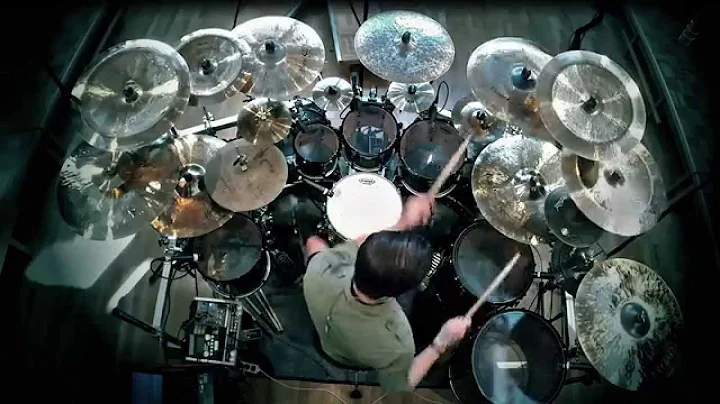David D Dieziger
age ~68
from Bonners Ferry, ID
- Also known as:
-
- David Douglas Dieziger
- David I Dieziger
David Dieziger Phones & Addresses
- Bonners Ferry, ID
- Lake Havasu City, AZ
- 312 E 13Th Ave, Post Falls, ID 83854 • (208)7734170
- 9755 Horseback Ridge Rd, Missoula, MT 59804 • (406)5437440
- Ventura, CA
- Ontario, OR
Us Patents
-
Portable Vehicle Underbody Washing System
view source -
US Patent:7383845, Jun 10, 2008
-
Filed:Jul 1, 2005
-
Appl. No.:11/172025
-
Inventors:David Dieziger - Missoula MT, US
-
International Classification:B08B 3/00
B08B 3/04
B08B 3/12
B08B 6/00 -
US Classification:134123, 134 45, 1341042, 134111, 134172, 134198
-
Abstract:A portable washing device to be used to wash vehicles, consisting of a water supply tank (), a gravity-flow supply hose () leading to a pressurizing pump (), the pressurizing pump, a distribution hose (), an underbody washer mechanism () of booms (), rollers (), and spray nozzles () and hand-held wands with nozzles () for spraying the wash water and nozzles for a final rinse, a waterproof fabric mat () and collection and cleaning system () for collecting and recycling the used wash water. Tire ramps () protect the distribution hose from crushing and damage as the vehicle being washed passes over the hoses.
-
Vehicle Suspension System
view source -
US Patent:7722063, May 25, 2010
-
Filed:Apr 2, 2009
-
Appl. No.:12/417320
-
Inventors:David Douglas Dieziger - Missoula MT, US
-
International Classification:B60G 21/00
-
US Classification:280124103, 28012411, 280124111, 280124135, 280 5508
-
Abstract:A suspension system for a tilting vehicular chassis based on more than three wheels separates a tilting component of the chassis from a non-tilting component. The non-tilting component provides a means for powering the vehicle with automotive-type engine and drive train options, while the tilting component provides the turning stability necessary for a narrower wheel base. The narrower wheel base benefits fuel economy. The multiplicity of wheels, and the breadth of platform thus enabled, permits shelter and comfort features for the occupant not otherwise available on a typical two-wheel chassis.
-
Rotary Propulsion Nozzle Set
view source -
US Patent:7819339, Oct 26, 2010
-
Filed:Jan 1, 2009
-
Appl. No.:12/348009
-
Inventors:David Douglas Dieziger - Missoula MT, US
-
International Classification:B05B 3/06
B05B 1/26
B05B 3/04
B05B 3/02 -
US Classification:239252, 239251, 239505, 239507, 239509, 239510, 239511
-
Abstract:A self-governing spray apparatus for irrigation or cleaning purposes is provided. A spray nozzle at the end of a moment arm and substantially perpendicular to an axis of rotation creates a reaction torque to distribute a spray by spinning. A hinged member thrust into the spray pattern a centrifugal force caused by the spin deflects a portion of the spray and results in a braking action. An equilibrium angular speed is thereby reached by a self-correcting mechanism.
-
Portable Settling And Dewatering Tank
view source -
US Patent:7943051, May 17, 2011
-
Filed:Dec 22, 2009
-
Appl. No.:12/644639
-
Inventors:David Douglas Dieziger - Missoula MT, US
-
International Classification:B01D 37/00
B01D 21/02
B01D 21/24
B01D 29/25 -
US Classification:210767, 210804, 210807, 210241, 210265, 210291, 210248
-
Abstract:A settling tank for dewatering a thin slurry is provided in a lined portable container and with a disposable filtering means. A novel method of processing the slurry by settlement of the solid phase and removal of the liquid phase in cycles avoids the clogging of the filtering means. The settling tank can be easily transported and dumped without requiring the transferring of residue sludge or the cleaning of equipment.
-
System For Loading Cargo
view source -
US Patent:8534978, Sep 17, 2013
-
Filed:Nov 10, 2009
-
Appl. No.:12/615429
-
Inventors:David Douglas Dieziger - Missoula MT, US
-
International Classification:B60P 1/64
-
US Classification:414500, 414538
-
Abstract:A simplified apparatus is provided to exploit certain unique characteristics of DC winches, whereby two winches may be cooperatively joined to load and unload a light-duty truck. Since the speed and torque are linearly related in a DC motor, it possible to manipulate certain parameters, such as the resistance of the armature and the mechanical leverage applied to the load, to result in a stable dynamic between two oppositely-directed DC-motor winches. The novel concept avoids the need for controls to coordinate the winches, and no installation is required that would otherwise limit the use of the truck for other purposes.
-
Vehicle Suspension System
view source -
US Patent:20080100018, May 1, 2008
-
Filed:Nov 1, 2006
-
Appl. No.:11/590475
-
Inventors:David Dieziger - Missoula MT, US
-
International Classification:B60G 21/00
B60G 3/20 -
US Classification:280124103, 280124135
-
Abstract:The invention is a suspension system for a three (3) or more wheeled vehicle, which vehicle tilts from the vertical plane during operation in a manner like that of a motorcycle. The suspension system divides the vehicle into two parts. The first part consists of the front, possibly the rear wheel(s), passenger compartment, and possibly a cargo compartment connected in such a way that they lean or tilt together. The second part, the rest of the vehicle, does not lean or tilt. The non-tilting components are connected to a rigid structure that extends from the front to the rear suspension where it is connected to each wheel's spring and shock absorber. The non-tilting portion of the vehicle provides resistance for each wheel's shock absorber and spring to act against, leaving the tilting portion free to lean like a motorcycle. The accompanying drawing sheets through , inclusive, depict the suspension system with four (4) wheels and a dual “A arm” independent suspension common to many traditional motor vehicles, but the concept of which, dividing the vehicle into tilting and non-tilting components with the suspension acting on the non-tilting portion, can be adapted to a vehicle with 2 front tilting wheels with one or two rear wheels that tilt or do not tilt, other suspension springs such as coil, leaf, hydraulic, or pneumatic, and other independent or solid axle suspension systems.
-
Centrifugal Pump For De-Watering
view source -
US Patent:20110002769, Jan 6, 2011
-
Filed:Jul 2, 2009
-
Appl. No.:12/497190
-
Inventors:David Douglas Dieziger - Missoula MT, US
-
International Classification:F04D 27/00
-
US Classification:415 1
-
Abstract:A method of de-watering during intermittent dry running periods with a self-priming centrifugal pump is presented. Centrifugal pumps, as opposed to diaphragm pumps, are advantageous because they are less expensive and can provide greater capacity. The shaft seals are sensitive, however, to frictional heating when water flow is interrupted. In some situations, this fractional heating may desiccate self-priming. The inventive concept provides a continuous stream of pressurized water moving through the pump to cool the seal and sustain priming capability without substantially impairing the ability of the pump to resume wet operation.
-
Centrifugal Pump For De-Watering
view source -
US Patent:20130022447, Jan 24, 2013
-
Filed:Oct 1, 2012
-
Appl. No.:13/632282
-
Inventors:David Douglas Dieziger - Missoula MT, US
-
International Classification:F04D 27/00
-
US Classification:415 1
-
Abstract:A method of de-watering during intermittent dry running periods with a self-priming centrifugal pump is presented. Centrifugal pumps, as opposed to diaphragm pumps, are advantageous because they are less expensive and can provide greater capacity. The shaft seals are sensitive, however, to frictional heating when water flow is interrupted. In some situations, this fractional heating may desiccate self-priming. The inventive concept provides a continuous stream of pressurized water moving through the pump to cool the seal and sustain priming capability without substantially impairing the ability of the pump to resume wet operation.
Name / Title
Company / Classification
Phones & Addresses
EZ PICKUP LLC
3111 Silver Saddle Dr, Lake Havasu City, AZ 86406
President, Principal
Acme Endeavors
Automotive · Vehicle Underbody Washing
Automotive · Vehicle Underbody Washing
9755 Horseback Rdg Rd, Missoula, MT 59804
3111 Silver Saddle Dr, Lake Havasu City, AZ 86406
3111 Silver Saddle Dr, Lake Havasu City, AZ 86406
Youtube

David Douglas Dieziger
view sourceDavid Douglas Dieziger

David Dieziger
view sourceFriends:
Stephen Como, Pauly N Launi Haygood
Get Report for David D Dieziger from Bonners Ferry, ID, age ~68





